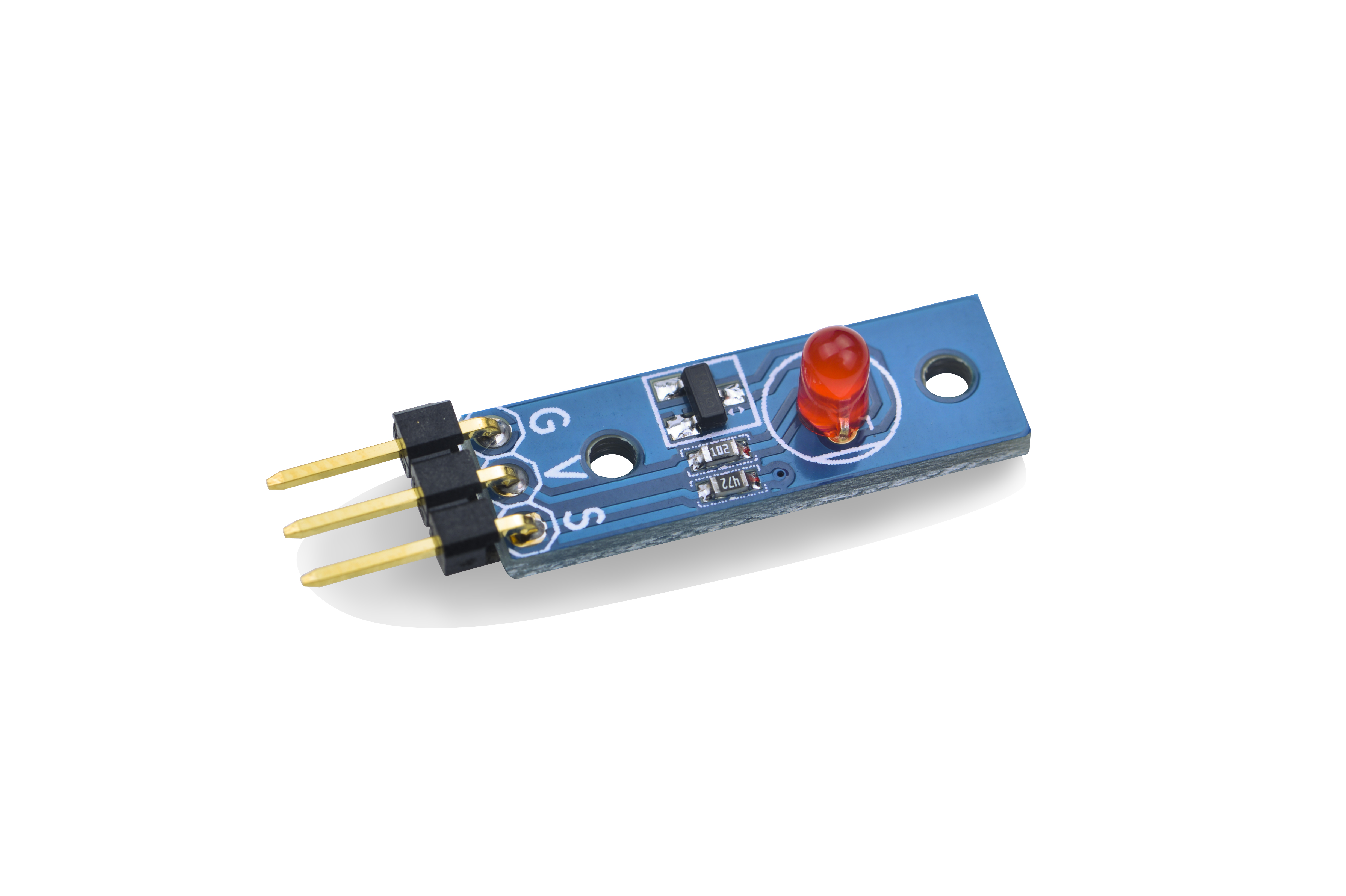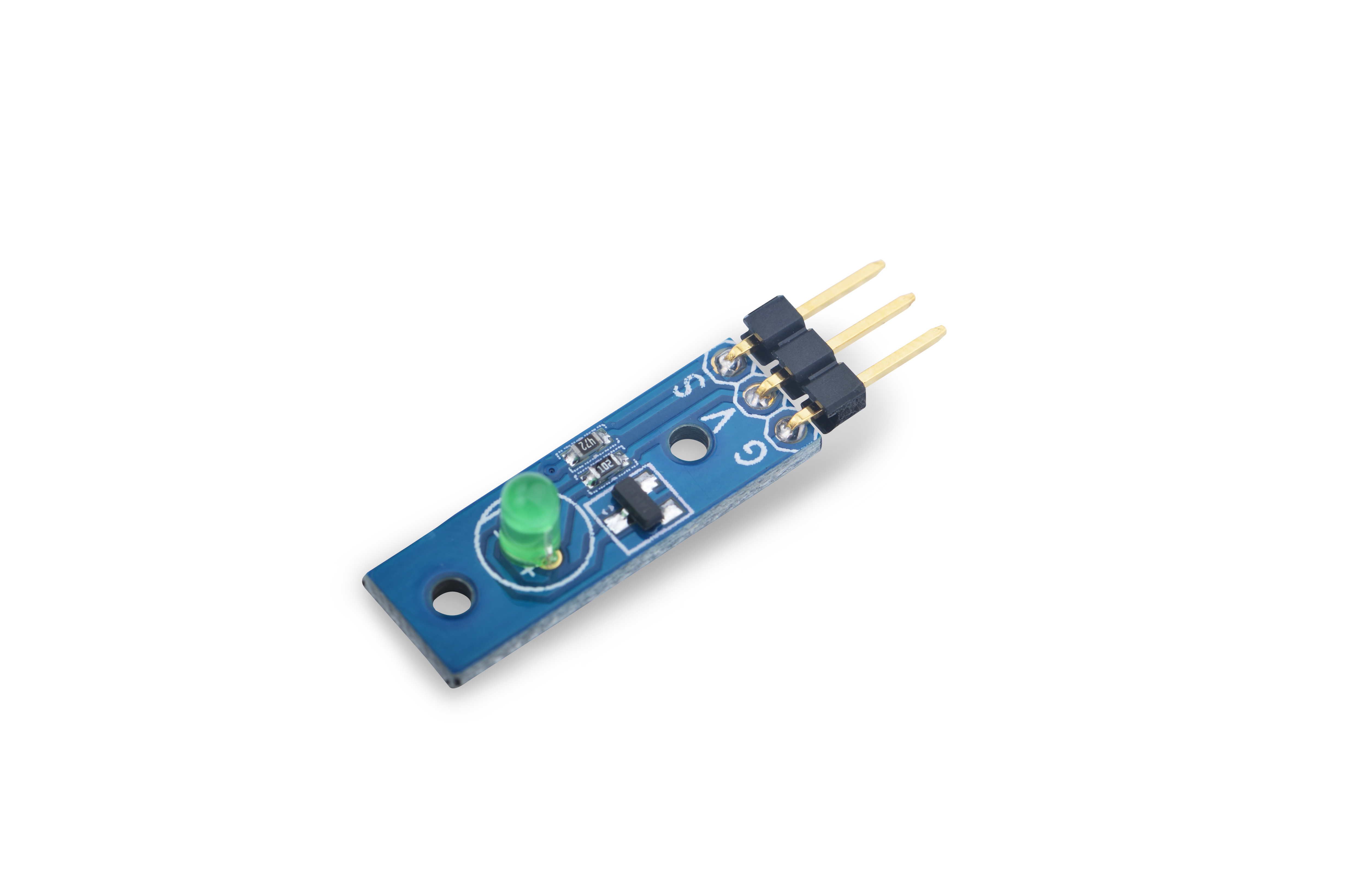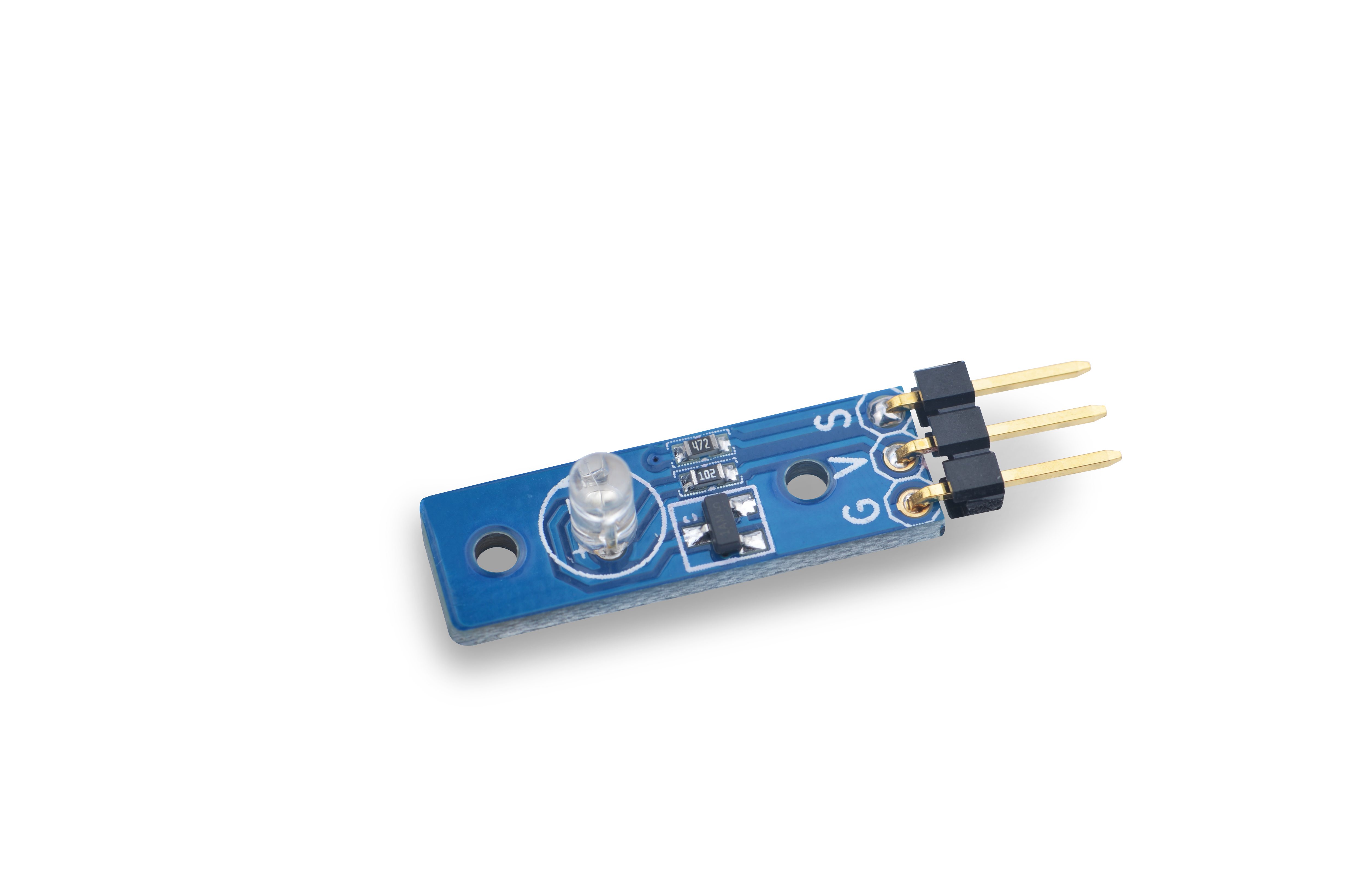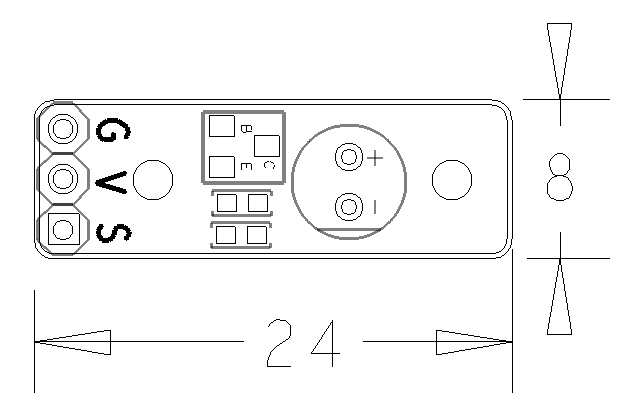Difference between revisions of "Matrix - LED"
(→硬件连接) |
|||
| Line 29: | Line 29: | ||
The module has three 2.54 mm spacing pins: V(supply voltage),G(ground) and S(signal) which is connected to a triode to turn the LED on or off. You can write high or low, or PWN signals(3.3V or 5V) to S. When you write high to S the LED will turn on and become brightest. When you write low to S the LED will turn off. If you write PWM signals to S the LED's brightness will vary depending on the PWM's signal variances. | The module has three 2.54 mm spacing pins: V(supply voltage),G(ground) and S(signal) which is connected to a triode to turn the LED on or off. You can write high or low, or PWN signals(3.3V or 5V) to S. When you write high to S the LED will turn on and become brightest. When you write low to S the LED will turn off. If you write PWM signals to S the LED's brightness will vary depending on the PWM's signal variances. | ||
| − | == | + | ==Applications== |
| − | === | + | ===Connect to NanoPi M1=== |
| − | + | Refer to the following connection diagram to connect the module to the NanoPi M1:<br> | |
[[File:Matrix-LED_nanopi_m1.jpg|frameless|600px|Matrix-LED_nanopi_m1]] | [[File:Matrix-LED_nanopi_m1.jpg|frameless|600px|Matrix-LED_nanopi_m1]] | ||
| − | + | Connection Details: | |
{| class="wikitable" | {| class="wikitable" | ||
|- | |- | ||
| Line 46: | Line 46: | ||
|} | |} | ||
| − | === | + | ===Connect to NanoPi 2=== |
| − | + | Refer to the following connection diagram to connect the module to the NanoPi 2:<br> | |
[[File:Matrix-LED_nanopi_2.jpg|frameless|600px|Matrix-LED_nanopi_2]] | [[File:Matrix-LED_nanopi_2.jpg|frameless|600px|Matrix-LED_nanopi_2]] | ||
| − | + | Connection Details: | |
{| class="wikitable" | {| class="wikitable" | ||
|- | |- | ||
| Line 62: | Line 62: | ||
|} | |} | ||
| − | === | + | ===Connect to NanoPi M2 / NanoPi 2 Fire=== |
| − | NanoPi | + | Refer to the following connection diagram to connect the module to the NanoPi M2/ NanoPi 2 Fire:<br> |
| − | + | ||
[[File:Matrix-LED_nanopi_m2.jpg|frameless|600px|Matrix-LED_nanopi_m2]] | [[File:Matrix-LED_nanopi_m2.jpg|frameless|600px|Matrix-LED_nanopi_m2]] | ||
| − | + | Connection Details: | |
{| class="wikitable" | {| class="wikitable" | ||
|- | |- | ||
| Line 79: | Line 78: | ||
|} | |} | ||
| − | === | + | ===Connect to NanoPC-T2=== |
| − | + | Refer to the following connection diagram to connect the module to the NanoPC-T2:<br> | |
[[File:Matrix-LED_NanoPC-T2.jpg|frameless|600px|Matrix-LED_NanoPC-T2]] | [[File:Matrix-LED_NanoPC-T2.jpg|frameless|600px|Matrix-LED_NanoPC-T2]] | ||
| − | + | Connection Details: | |
{| class="wikitable" | {| class="wikitable" | ||
|- | |- | ||
Revision as of 14:31, 21 June 2016
Contents
1 Introduction
The Matrix-LED is an LED module with three 2.54 mm spacing pins: V(supply voltage),G(ground) and S(signal) which is connected to a triode to turn the LED on or off. You can write high or low, or PWN signals(3.3V or 5V) to S. When you write high to S the LED will turn on and become brightest. When you write low to S the LED will turn off. If you write PWM signals to S the LED's brightness will vary depending on the PWM's signal variances.
2 Features
- GPIO/PWM interface, 3.3/5V, PWM brightness control
- Small, easy to be used in various situations
- 2.54 mm spacing pin
- PCB Dimension(mm): 8 x 24
- Pin Description:
| Pin | Description |
| S | GPIO |
| V | Supply Voltage 5V |
| G | Ground |
3 Basic Device Operation
The module has three 2.54 mm spacing pins: V(supply voltage),G(ground) and S(signal) which is connected to a triode to turn the LED on or off. You can write high or low, or PWN signals(3.3V or 5V) to S. When you write high to S the LED will turn on and become brightest. When you write low to S the LED will turn off. If you write PWM signals to S the LED's brightness will vary depending on the PWM's signal variances.
4 Applications
4.1 Connect to NanoPi M1
Refer to the following connection diagram to connect the module to the NanoPi M1:
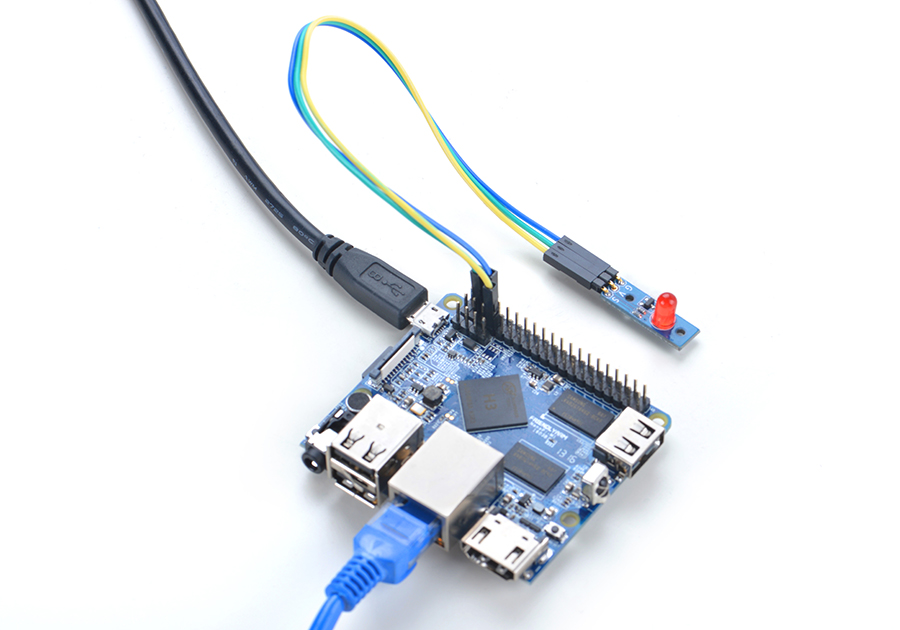
Connection Details:
| Matrix-LED | NanoPi M1 |
| S | Pin7 |
| V | Pin4 |
| G | Pin6 |
4.2 Connect to NanoPi 2
Refer to the following connection diagram to connect the module to the NanoPi 2:
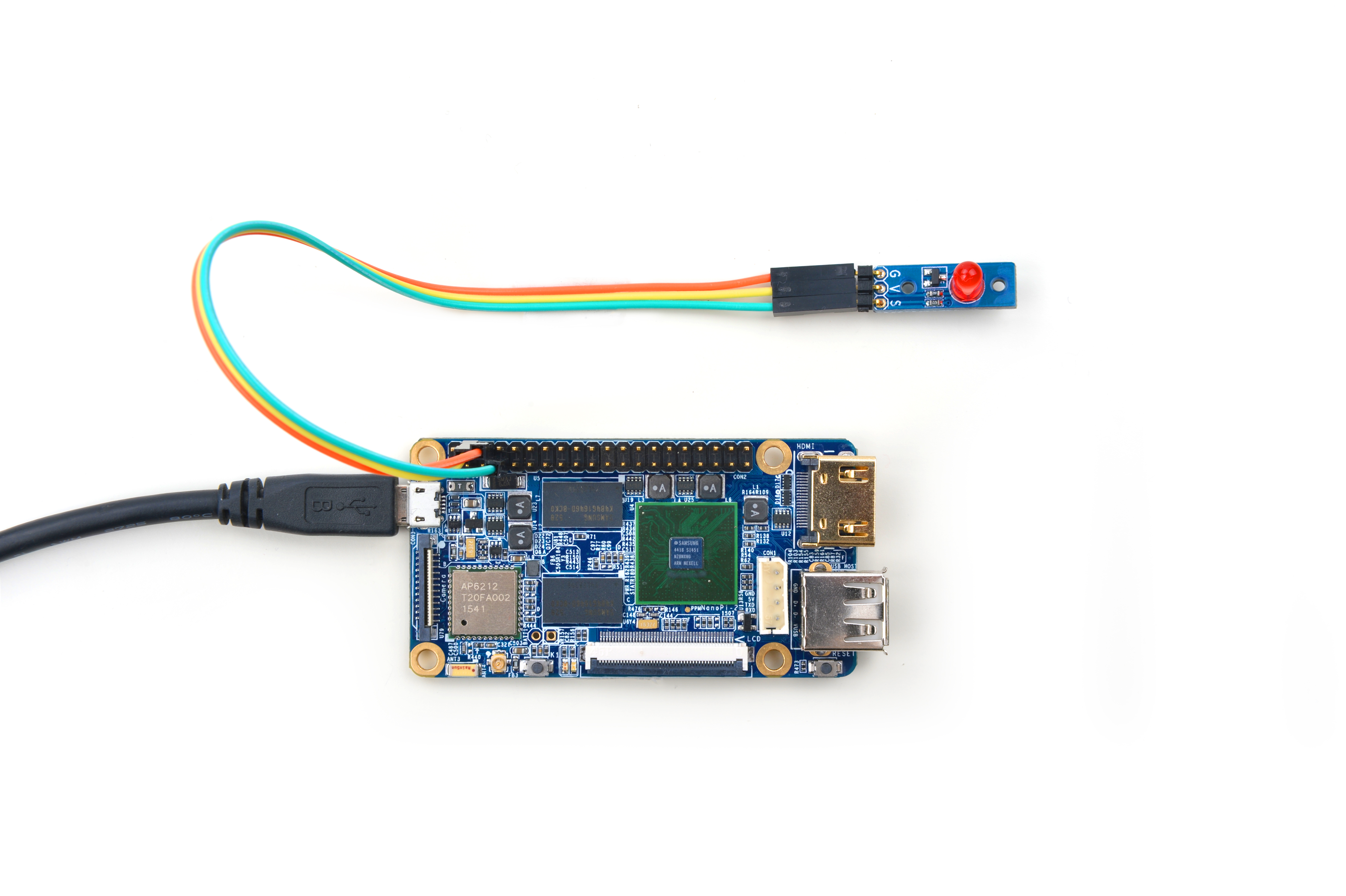
Connection Details:
| Matrix-LED | NanoPi 2 |
| S | Pin7 |
| V | Pin4 |
| G | Pin6 |
4.3 Connect to NanoPi M2 / NanoPi 2 Fire
Refer to the following connection diagram to connect the module to the NanoPi M2/ NanoPi 2 Fire:
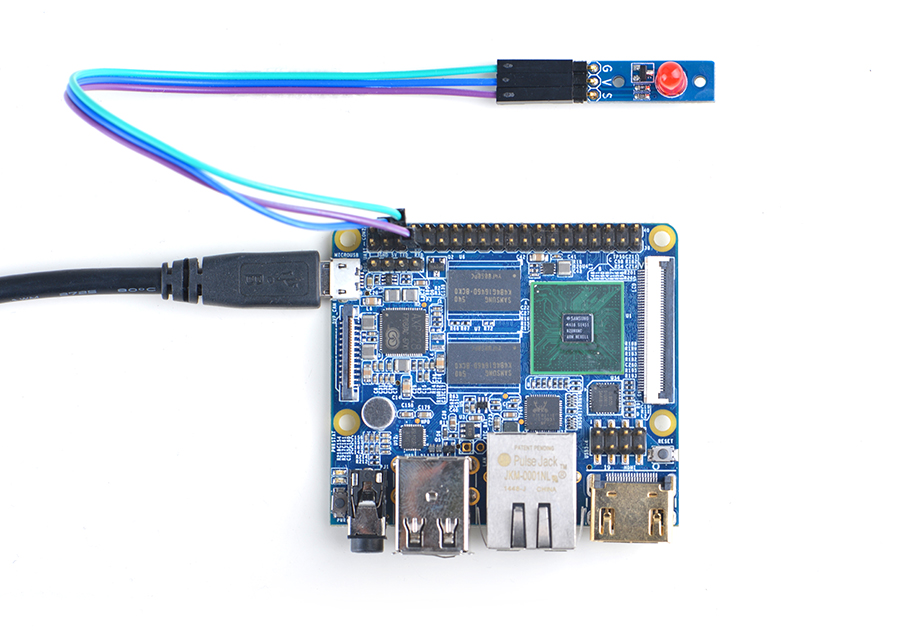
Connection Details:
| Matrix-LED | NanoPi M2 |
| S | Pin7 |
| V | Pin4 |
| G | Pin6 |
4.4 Connect to NanoPC-T2
Refer to the following connection diagram to connect the module to the NanoPC-T2:
Matrix-LED_NanoPC-T2
Connection Details:
| Matrix-LED | NanoPC-T2 |
| S | Pin15 |
| V | Pin29 |
| G | Pin30 |
5 编译运行测试程序
启动开发板并运行Debian系统,进入系统后克隆Matrix代码仓库:
$ apt-get update && apt-get install git $ git clone https://github.com/friendlyarm/matrix.git
克隆完成后会得到一个名为matrix的目录。
编译并安装Matrix:
$ cd matrix $ make && make install
运行测试程序:
$ matrix-gpio_out注意:此模块并不支持热插拔,启动系统前需要确保硬件连接正确。
运行效果如下:
1: gpio status change 2: gpio status change 3: gpio status change 4: gpio status change 5: gpio status change
可以看到LED在不停地闪烁。
6 代码说明
所有的开发板都共用一套Matrix代码,本模块的测试示例代码为matrix-gpio_out,内容如下:
int main(int argc, char ** argv) { int pin = GPIO_PIN(7); int i, value, board; int ret = -1; if ((board = boardInit()) < 0) { printf("Fail to init board\n"); return -1; } if (board == BOARD_NANOPI_T2) pin = GPIO_PIN(15); if (argc == 2) pin = GPIO_PIN(atoi(argv[1])); if ((ret = exportGPIOPin(pin)) == -1) { printf("exportGPIOPin(%d) failed\n", pin); } if ((ret = setGPIODirection(pin, GPIO_OUT)) == -1) { printf("setGPIODirection(%d) failed\n", pin); } for (i = 0; i < STATUS_CHANGE_TIMES; i++) { if (i % 2) { value = GPIO_HIGH; } else { value = GPIO_LOW; } if ((ret = setGPIOValue(pin, value)) > 0) { printf("%d: GPIO_PIN(%d) value is %d\n", i+1, pin, value); } else { printf("setGPIOValue(%d) failed\n", pin); } sleep(1); } unexportGPIOPin(pin); return 0; }
API说明参考维基:Matrix API reference manual
7 Resources
8 Update Log
8.1 Feb-18-2016
- Added the description for "NanoPi 2 branch" in Section 4
- Added Section 5: Connect to NanoPi 2
